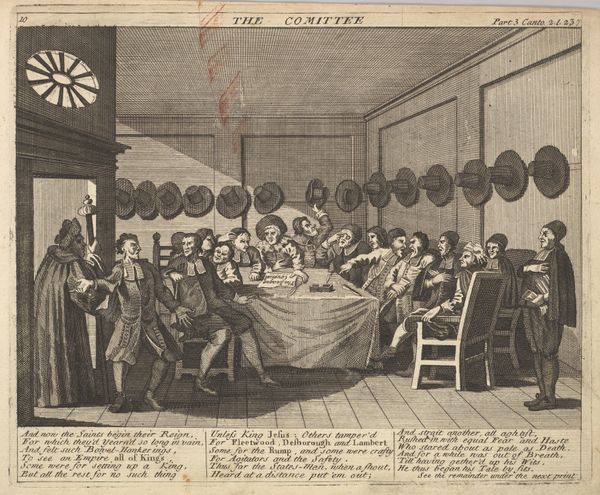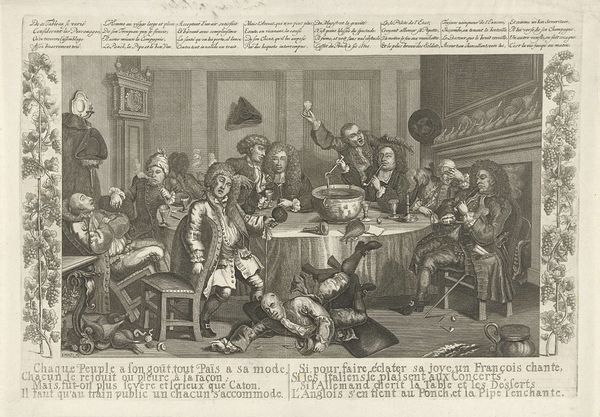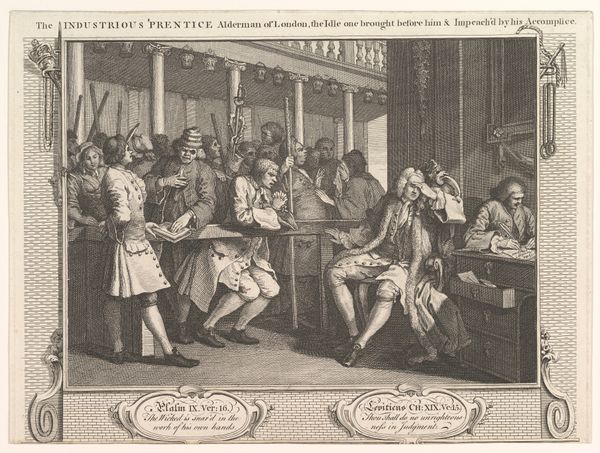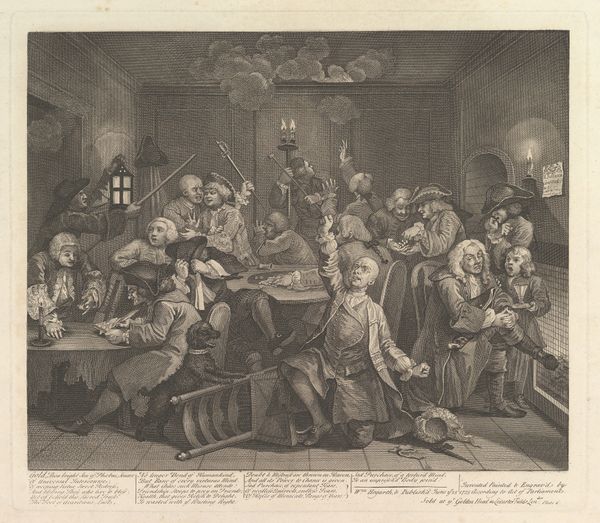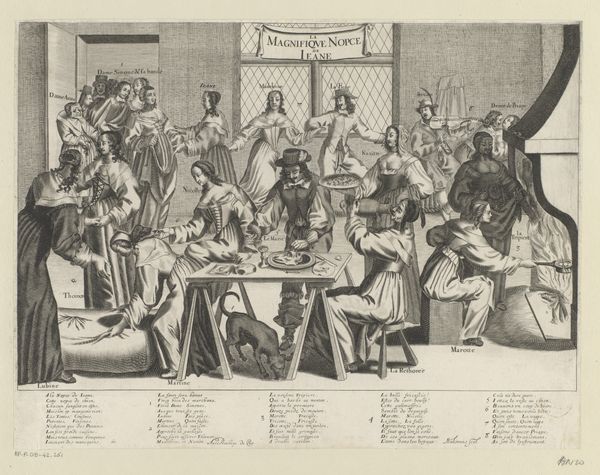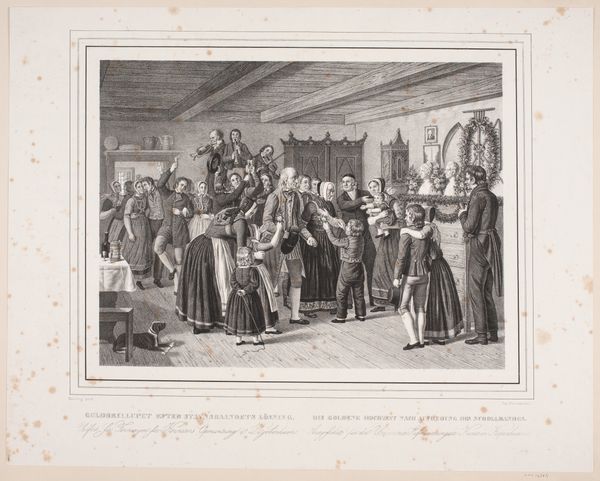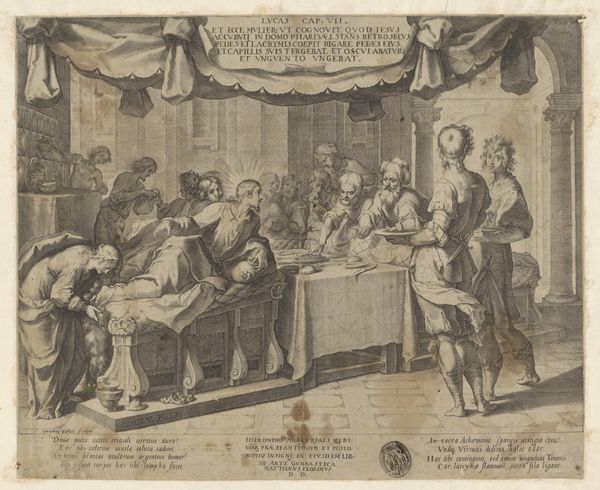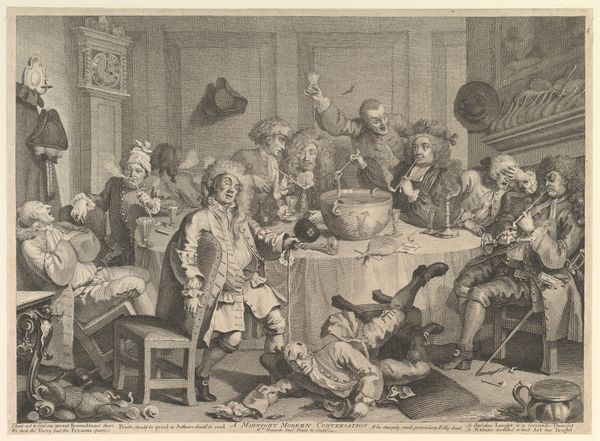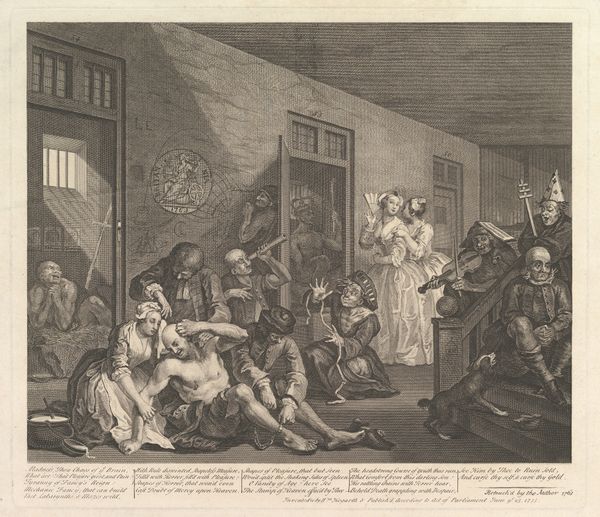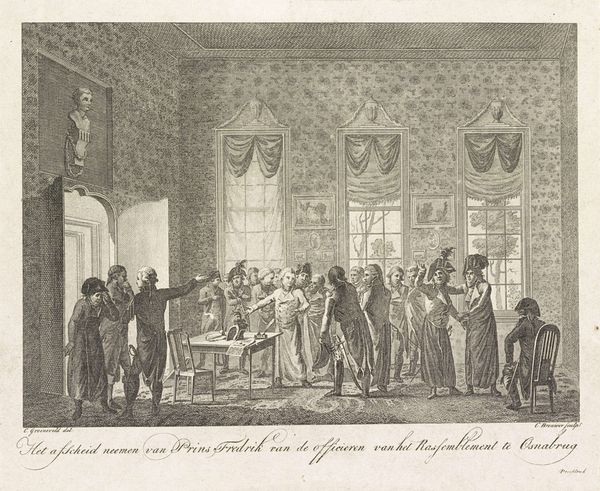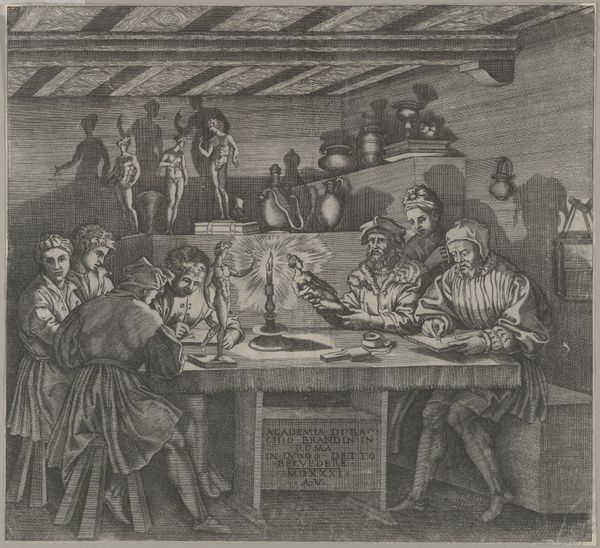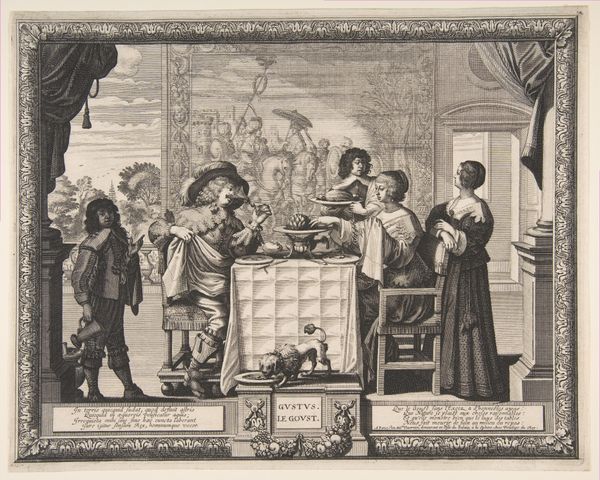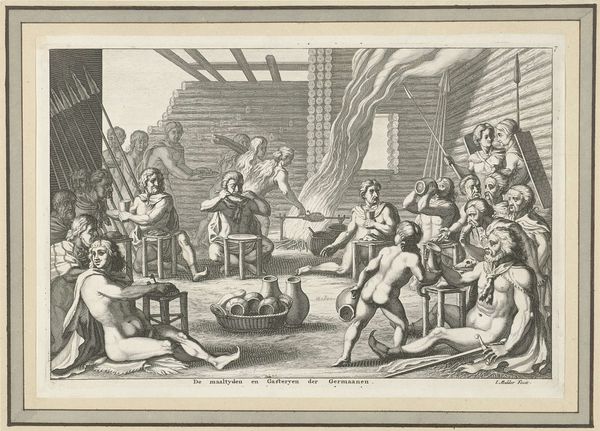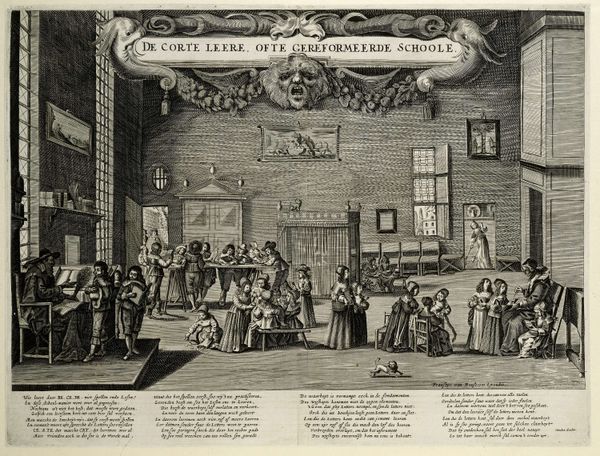
The Committee (Twelve Large Illustrations for Samuel Butler's Hudibras, Plate 10) 1725 - 1768
0:00
0:00
drawing, print, engraving
#
drawing
#
narrative-art
#
baroque
# print
#
men
#
genre-painting
#
engraving
Dimensions: sheet: 10 1/4 x 13 3/4 in. (26 x 34.9 cm) (trimmed)
Copyright: Public Domain
Curator: Today we're looking at "The Committee (Twelve Large Illustrations for Samuel Butler's Hudibras, Plate 10)" by William Hogarth, made sometime between 1725 and 1768. It’s an engraving, so a print, currently residing at the Metropolitan Museum of Art. Editor: Immediately, the tight, claustrophobic composition strikes me. The stark contrasts in the engraving emphasize the almost grotesque expressions of the men huddled around the table. There's a sense of palpable tension. Curator: Yes, Hogarth was a master of satire, and here he’s taking aim at political committees. It’s a visual commentary on power, corruption, and the often-absurd nature of political discourse, deeply rooted in the social context of his time. The materials – the paper, the ink, the copper plate – are crucial because engraving allowed Hogarth to mass-produce these images and disseminate his critique widely. Editor: And look at how the identities are coded. We can assume those arranged here represent the various seats of power within the government at that time. I would ask what the story being told is suggesting, in the light of our contemporary cultural conversations. I wonder about the role of visibility and how the dynamics of the period are still reflected in our cultural institutions. Curator: Absolutely, these were not paintings meant for a single aristocratic patron, but mass-produced images consumed and discussed by a wider audience. Consider the labor involved in the engraving process, the workshops, the economy surrounding printmaking. It’s a material network that speaks to the shifting dynamics of art production and consumption in the 18th century. And what the engraving does with lines, as simple dark marks but suggestive of such tension. Editor: Indeed. The historical specificity of this scene opens up broader questions about political rhetoric and the construction of authority. Which of those represented get to control narrative, then, and now? Curator: A brilliant point. Thinking about the materiality, even the wear and tear on the print itself tells a story of its use, its circulation, its survival through time, even up to its digital reproduction and online discussion. Editor: In our modern context, and even today we are debating the role and power structures within political organizations, this historical mirror remains very pertinent. It pushes us to think critically about the power of art to engage with our social and political issues. Curator: Precisely. This really reveals to me that the way we value, classify, and disseminate these images impacts how their political messages continue to affect our perspectives. Editor: I concur. And that careful reading and thoughtful interrogation ensures we get the full measure of works such as these.
Comments
No comments
Be the first to comment and join the conversation on the ultimate creative platform.
